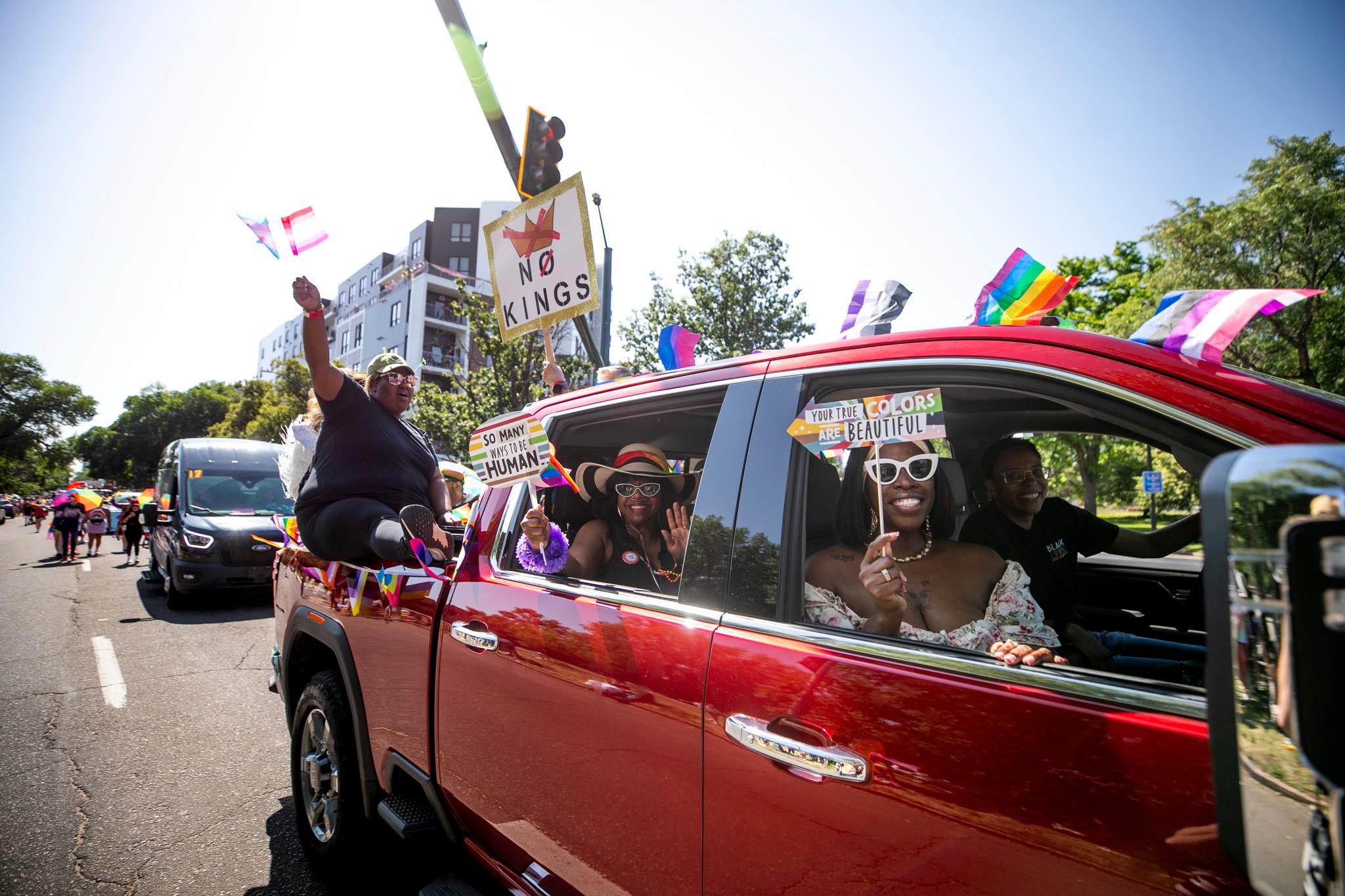
It's a distressing figure for sustainability -- the percentage of people driving alone into downtown Denver went up for the first time in five years of the Downtown Denver Partnership commuter study.
Now, 40.3 percent of the respondents say that driving alone is the main way they get to their jobs downtown -- up from just under 40 percent last year.
Denver Director of Transportation Crissy Fanganello, RTD Assistant General Manager for Planning Bill Van Meter, Bike Denver Executive Director James Waddell and Streetsblog Denver Editor David Sachs talked about it in a DDP forum on Wednesday.
Why did the number of people driving alone go up?
"A lot of our peer agencies are seeing some slight declines in ridership and some of the trends mentioned -- declining gas prices, there is a direct relationship in elasticity -- definitely impact that. There's some speculation, although no proof, that an improving economy and more disposable income may be driving that shift."
- Bill Van Meter, RTD
Or it could be ticket prices...
"Our board has asked us to look into a bit more whether our fare changes, some increases and some decreases actually, may also have had some impact."
- Bill Van Meter, RTD
How do we change that?
"Is there an incentive for you to take the bus if you watch the bus sit in traffic with you? Or would there be more of an incentive for you to take the bus if the bus is actually in a dedicated space and moving along and passing you by? That's a lot of what we hear from a rail perspective -- the train is going by and we're all sitting on I-25 stuck in traffic, but you don't have that same experience on our city streets, particularly when you're coming into and out of downtown."
- Crissy Fanganello, city of Denver
Ok, so how come we haven't given Colfax a dedicated bus lane already?
"People are saying, even in our partner agencies, you can't take a lane of traffic even for peak hour and dedicate it to transit because you're taking capacity. We move upwards of 20,000 a day on Colfax, and that's comparable to some of the light rail lines. But bus rapid transit could move upwards of 40-50,000 people per day. So we have to understand how we're talking about capacity because we're not taking capacity, we're adding capacity."
- Crissy Fanganello, city of Denver
What can I do?
"What are our values? What are we as a community willing to pay for? The budget is what the budget is. Could we make some different choices within the city budget, perhaps, but we often don't think about what we pay for transit. ...
"The city of Seattle, who is about the same size as us, different geography, far more constrained that the city of Denver is, they passed a transit tax. As a result, the city is collecting and spending $45 million a year on improving and buying transit service. They are growing at about the same pace at Denver. Our single-occupancy mode share went from 70 to 73 percent and everyone was like 'well, can't we just say it was because we were growing so quickly' -- Seattle is growing at about the same rate and their share went down 9 percent."
- Crissy Fanganello, city of Denver
And let's chill out with the driverless cars already
"I just want to remind people that when the automobile was invented, it changed the way we built our cities. Everyone said it was going to fix everything, there were going to be flying cars over the cities. And the rhetoric that's going on now about autonomous vehicles is very similar to what was happening in the 20s and 30s. I think it's dangerous to say that this is a fix-all without thought-out policies."
- David Sachs, Streetsblog Denver












